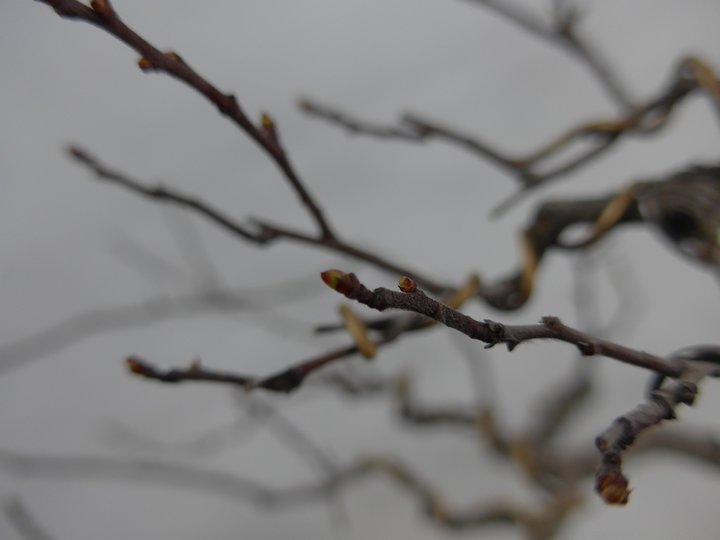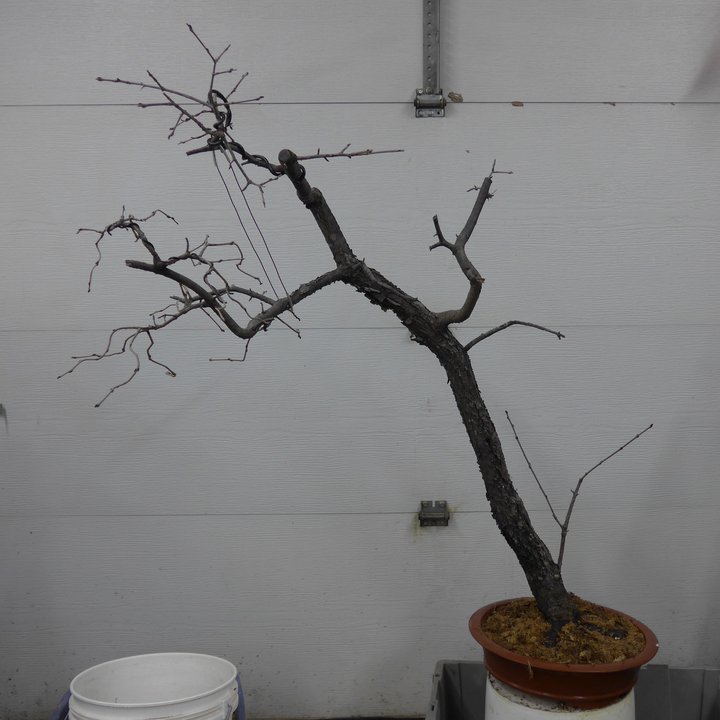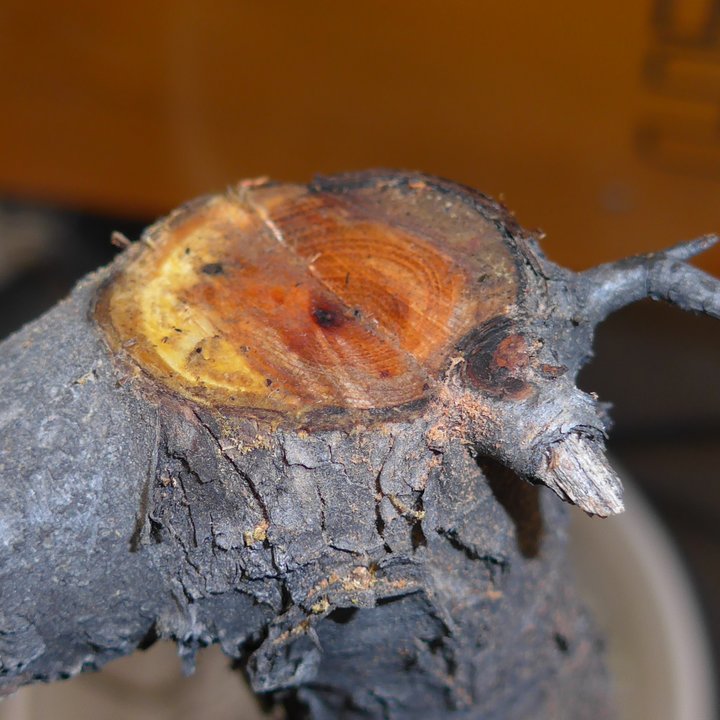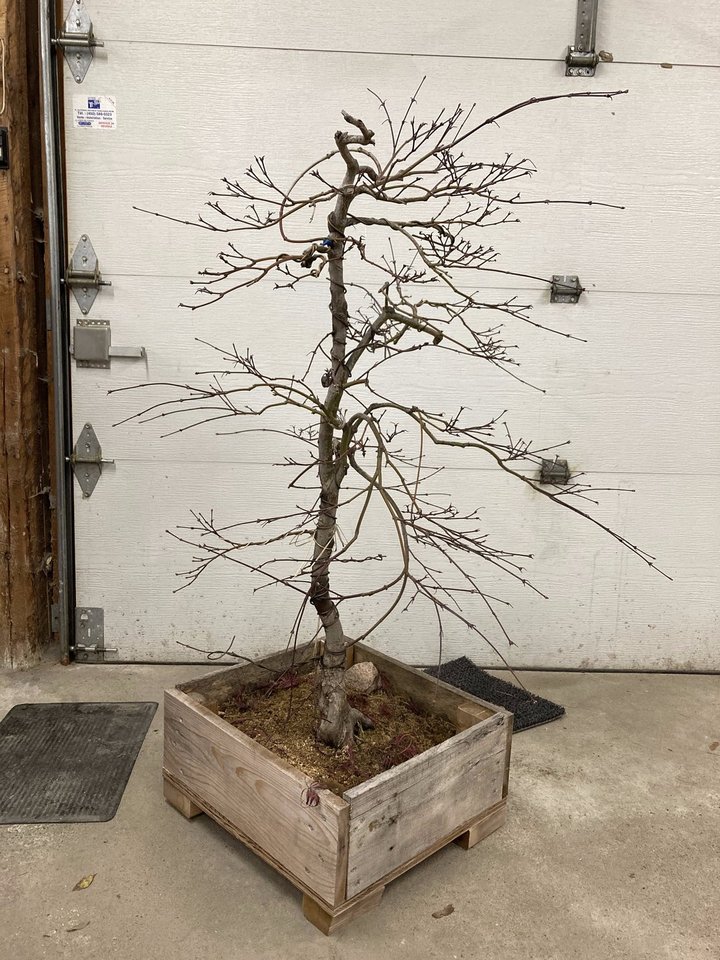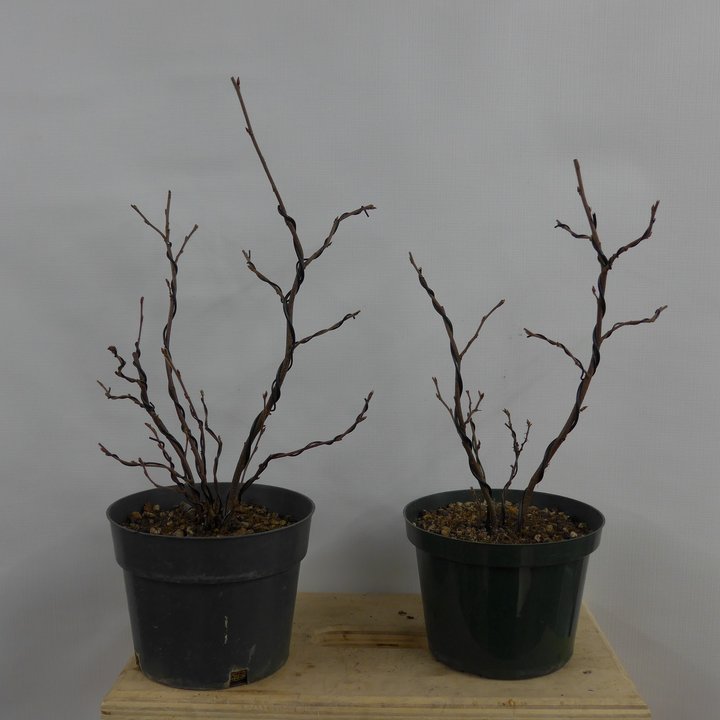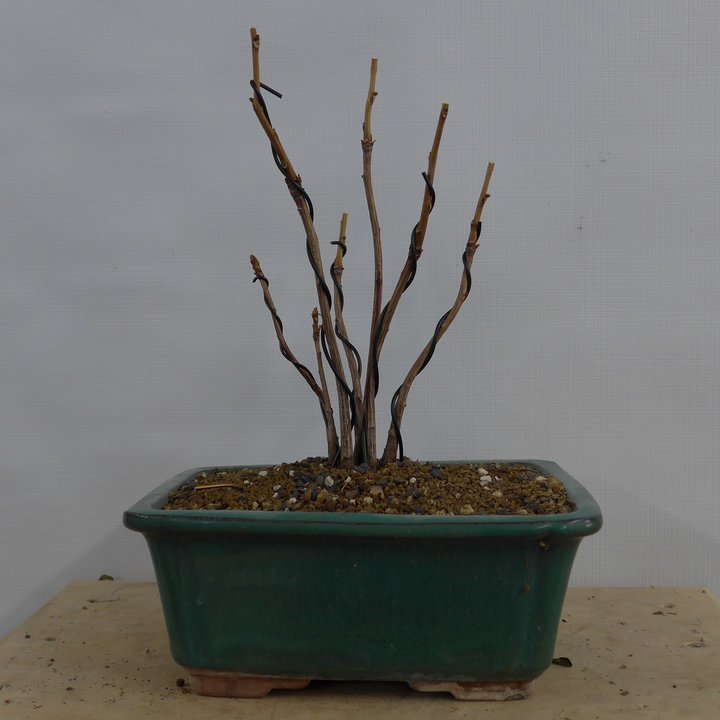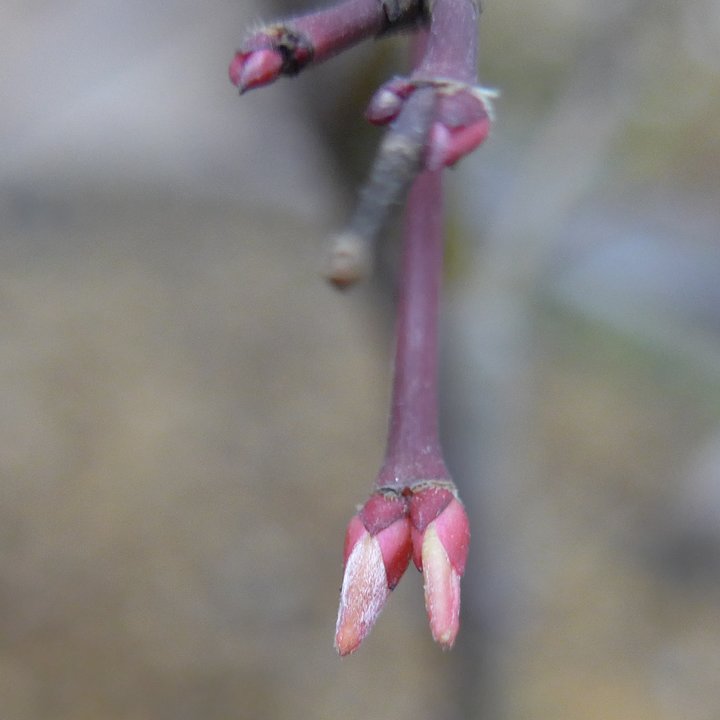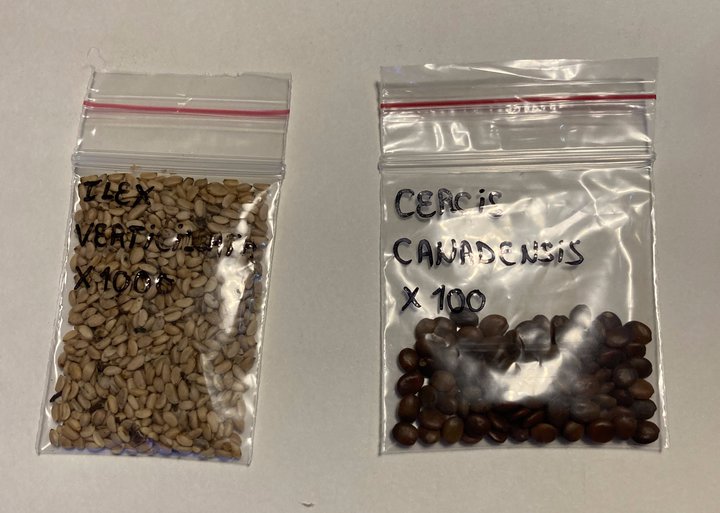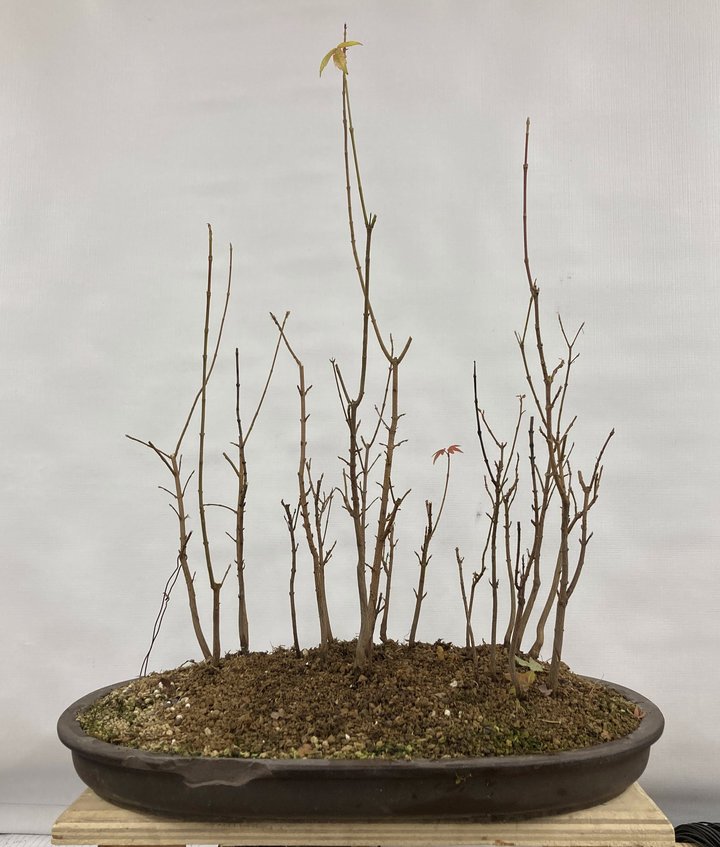This small shohin hawthorn is lacking a few branches along the trunk. A branch was let to grow long enough to be grafted. This graft will have three purposes: fill a void, create a back branch and heal wounds on the trunk.
Wounds that have to heal on the trunk:
A channel is grooved to receive the graft:
We check the fit and adjust as needed:
...
This hawthorn was repotted and defoliated last year. It is ramifying but still remains early in its development. Only a few branches are cut and repositioned using wire.
The hook technique A wire can be anchored using a hook instead of wiring to anoher branch.
3 branches junction A branch is removed to eliminate a three-branch junction.
...
This Buckthorn was cultivated 4 years in wooden boxes since its collection. The time has come to reduce the root mass to its final size. This a major step towards domesticating this tree normally considered an invading species in Eastern-Canada. I will further incline the trunk towards the left and front.
Before reduction:
After reduction:
Close-up of the nebari:
...
This Buckthorn will make a big bunjin with over 1 meter tall. Only a few branches will be kept in the end to create a minimalistic canopy. From now on I will barely use wire and use directional pruning to exacerbate the geometric growth pattern of this species.
Before wiring.
After wiring.
A stub near the apex is removed.
...
This Japanese maple is an Acer palmatum ssp. dissectum var ‘Tamukeyama’ and was bought in 2014 in a big renovation store at a discount price. In fall, all branches were cut back close to the trunk.
Here is what the same tree looks like 6 years later:
Ramification techniques Branch ramification is promoted by the means of the following 4 techniques or principles:
...
These now 2-years-old white birches were planted together in 2020. Their trunks are now fusing together and I wired them to evoke an isolated clump at the edge of a forest.
Here are two pairs of before-after shots.
...
These now 2-years-old ginkgo bilobas were planted together in 2020. Their trunks are now fusing together and I wired them to illustrate the typical flame shape that characterize the old ginkgos.
Here are three pairs of before-after shots.
...
The trees in the garage are stimulated by the sun filtering through the window. Their biological clock is ticking as days are getting longer. Even when the temperatures are hovering above the freezing point, some impatient trees already show signs of awakening in the cold of winter. Two months before we can move them outside, here are some ealy bloomers.
Acer palmatum
Chaenomeles japonica
...
This spring I am trying to grow the following species from seeds: Ilex verticilata, Cercis canadensis, Betula nigra and Quercus. Here is how I break the seeds dormancy for most native species from Canada.
scarification The seeds are first soaked in boiling water and then left for 24 hours at room temperature. The ones that float are most likely sterile and are discarded.
stratification The second step to break the seed’s embryo dormancy is to simulate a winter in the ground. The seeds are mixed with sterilized and moist sand and stored in the refrigerator between 30 and 90 days, essentially until I am ready to sow them.
...
After their first growing season as a forest, the trees have grown well. They must now be cut back in order to define only one clear leader per trunk. Some of the smaller trunks died and are removed. They will be replaced in the future years with cuttings taken from the taller trees. This will help increase the size diversity in the composition. Only one trunk is repositioned using a guy-wire.
...

